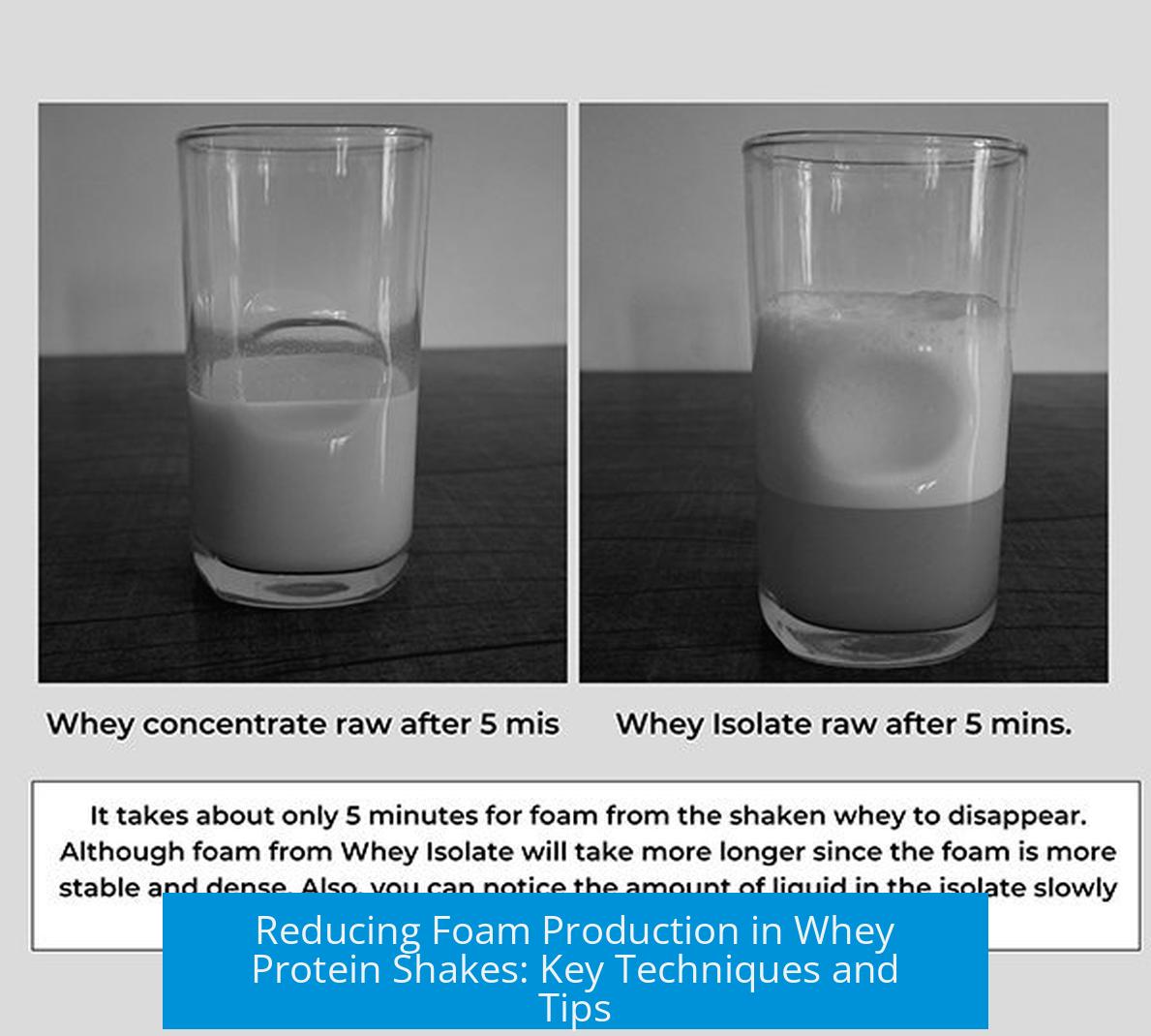Reducing Foam Production in Whey Protein Shakes
Foam in whey protein shakes results from air trapped by protein films formed during mixing. To reduce foam, one can adjust preparation methods, ingredients, and timing.
1. Use of Oils as Natural Antifoam Agents
Oils act as antifoam agents by breaking the thin films that trap air bubbles. Common options include:
- Vegetable oils: Simple oils like olive or canola oil reduce foam effectively.
- Peanut butter: Contains natural oils that decrease frothiness. When peanut butter is removed, foam often increases.
- Silicone oils: Highly effective but not recommended for home use due to potential digestive upset.
2. Preparation Techniques to Minimize Foam
How one mixes the shake greatly impacts foam:
- Avoid blending after adding protein powder: Blend other ingredients first, then hand stir in protein powder to reduce air incorporation.
- Slow stirring: Stirring slowly in a circular motion minimizes entrained air and allows less foam formation.
3. Cooling and Resting Time
Allowing the shake to rest helps foam dissipate naturally:
- Prepare in advance: Mixing the shake hours before consumption and refrigerating it significantly lowers foam.
- Rest periods: Foam often reduces within 10-20 minutes at typical serving sizes like 50 grams of whey.
- Overnight refrigeration: Premixing and chilling overnight is even more effective at reducing froth.
4. Formulation Adjustments
Changing the protein-to-fat ratio influences foam:
- Increase fat content: More fat reduces foam but may affect taste.
- Adjust protein quantity: Very high protein amounts (e.g., 80 g) can cause excessive foam; consider reducing the serving size.
Key Takeaways
- Use natural oils like vegetable oil or peanut butter to suppress foam.
- Mix ingredients carefully: blend non-protein components first, then hand-stir protein slowly.
- Allow foam to settle by refrigerating shakes for 10-20 minutes or overnight.
- Modify protein-to-fat ratio cautiously to balance taste and foam levels.
How can oils reduce foam in whey protein shakes?
Oils like vegetable oil act as antifoam agents by breaking the surface tension that traps air bubbles. Natural sources like peanut butter also help reduce foam due to their oil content. Silicone oils work well but are not recommended for home use.
Why should I avoid blending whey protein powder?
Blending after adding protein powder causes more foam. It’s better to blend other ingredients first and then mix in the protein powder by hand. This reduces air incorporation and decreases foam formation.
Does letting the shake rest help reduce foam?
Yes. Preparing the shake in advance and refrigerating it for 10-20 minutes or even overnight allows the foam to settle. Foam disappears as trapped air escapes over time, improving the shake’s texture.
Can changing the protein to fat ratio help with foam?
Lowering the protein to fat ratio can reduce foam but may affect taste negatively. Balancing nutritional goals and foam reduction is important when adjusting this ratio.





Leave a Comment